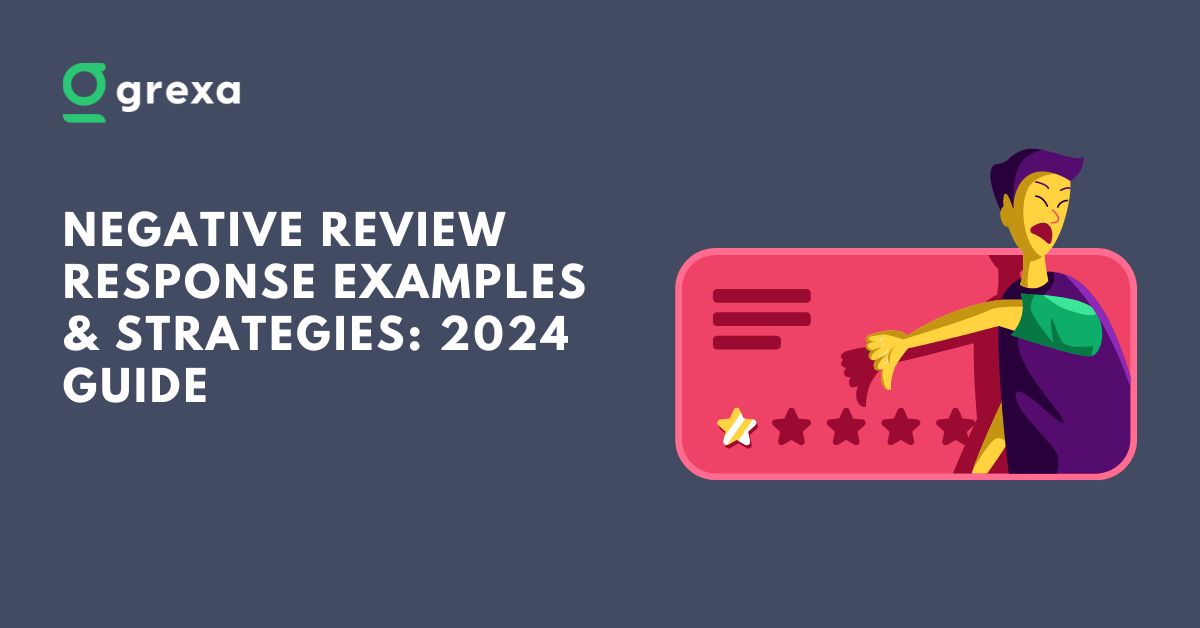In today’s digital age, Google reviews can make or break a business. Learning how to manage Google reviews effectively is crucial for success. This comprehensive guide will walk you through everything you need to know about Google review management.
Table of Contents
1. Understanding the Power of Google Reviews
Google reviews are more than just digital feedback. They’re a powerful tool that can significantly impact your business. Studies show that 93% of consumers read online reviews before making a purchase. This staggering statistic underscores the importance of managing your Google reviews effectively.

The Impact on Consumer Decision-Making
Reviews influence buying decisions. Positive reviews can boost confidence in your brand. Negative ones might drive potential customers away. How you manage these reviews can tip the scales in your favor.
Consider this: a single negative review can cost you 30 customers. On the flip side, positive reviews can increase conversions by up to 270%. These numbers highlight the critical role of effective Google review management in your business strategy.
Manage Google Reviews and Local Search Rankings
Did you know that Google reviews affect your local search rankings? The quantity, quality, and recency of your reviews all play a role. Google’s algorithm considers these factors when determining local search results.
Here’s how reviews impact your local SEO:
- Review quantity signals popularity
- Review quality indicates customer satisfaction
- Review recency shows ongoing relevance
- Review responses demonstrate engagement
A solid Google review management strategy can significantly boost your local search visibility.
Building Trust and Credibility
Reviews serve as social proof. They build trust between your business and potential customers. Properly managed reviews can enhance your credibility and reputation in the market.
Think of reviews as digital word-of-mouth. In fact, 88% of consumers trust online reviews as much as personal recommendations. By effectively managing your Google reviews, you’re nurturing a positive online reputation that can attract new customers and retain existing ones.
2. Setting Up Your Google Review Strategy
A solid strategy is key to effective Google review management. Let’s break down the essential steps.
2.1 Optimizing Your Google Business Profile
Your Google Business Profile is the foundation of your online presence. Here’s how to optimize it:
- Create and verify your profile
- Provide accurate and complete business information
- Enable and manage reviews
- Add high-quality photos and videos
- Use relevant categories and attributes
Remember, consistency is key. Ensure your business name, address, and phone number match across all platforms.
2.2 Creating a Review Funnel
A review funnel streamlines the process of collecting reviews. Here’s how to set one up:
- Develop a short URL for easy review sharing
- Implement QR codes for in-store review requests
- Integrate review requests into your customer journey
- Use email and SMS follow-ups
- Train staff to ask for reviews at key touchpoints
2.3 Developing a Review Response Strategy
Having a plan for responding to reviews is crucial. Here’s what to consider:
- Create response templates for different scenarios
- Set response time goals (e.g., within 24 hours)
- Designate team members responsible for responses
- Establish a process for escalating serious issues
- Regularly review and update your response strategy
Remember, personalization is key. Use templates as a starting point, but always tailor your responses to each specific review.
3. Leveraging Google Review Management Software
Google review management software can streamline your efforts. These tools offer features like:
- Automated review requests
- Real-time review monitoring
- Response templates
- Analytics and reporting
- Multi-location management
- Integration with other business tools
When choosing a Google review manager, consider factors like ease of use, integration capabilities, and pricing.
Key Features to Look for in Review Management Software
- Review monitoring across multiple platforms
- Customizable review request campaigns
- Review response management
- Sentiment analysis
- Competitor review tracking
- Detailed reporting and analytics
- Mobile app for on-the-go management
Invest in a tool that aligns with your business needs and can scale with your growth.
4. Encouraging Customers to Leave Reviews
Getting customers to leave reviews is an art. Here are some effective strategies:
- Craft compelling review request messages
- Time your requests for maximum impact
- Train staff on proper review solicitation techniques
- Leverage email and SMS for review requests
- Use in-store signage to promote reviews
- Include review links in receipts and invoices
- Create a loyalty program that encourages reviews
Remember, while it’s okay to ask for reviews, never offer incentives. This violates Google’s policies and can result in penalties.
Timing Your Review Requests
The timing of your review requests can significantly impact your success rate. Consider these moments:
- Immediately after a positive interaction
- Upon completion of a service
- After a repeat purchase
- When a customer expresses satisfaction
- At the end of a successful support interaction
Always strike while the iron is hot – when the customer’s positive experience is fresh in their mind.

5. Responding to Google Reviews: Best Practices
Responding to reviews is crucial in Google review management. Let’s explore best practices for different types of reviews.
5.1 Handling Positive Reviews
Positive reviews are great, but don’t just bask in the glory. Respond to them! Here’s how:
- Thank the reviewer personally
- Highlight specific points they mentioned
- Invite them back for future visits
- Share additional relevant information
- Use keywords naturally in your response
Engaging with positive reviewers can turn them into brand advocates.
5.2 Addressing Negative Reviews
Negative reviews require careful handling. Here’s a strategy:
- Respond promptly and professionally
- Apologize for their negative experience
- Offer to make things right
- Take the conversation offline when necessary
- Follow up after resolving the issue
- Request an updated review if appropriate
Remember, how you handle criticism speaks volumes about your business.
5.3 Dealing with Fake or Inappropriate Reviews
Unfortunately, not all reviews are genuine. Here’s how to handle fake or inappropriate reviews:
- Identify reviews that violate Google’s policies
- Report them to Google for removal
- Respond professionally, stating your concern about the review’s authenticity
- Document the process for future reference
- Focus on generating more positive authentic reviews
Always follow Google’s guidelines when flagging reviews for removal.

6. Monitoring and Analyzing Your Google Reviews
Effective Google review management involves ongoing monitoring and analysis. Here’s what to focus on:
- Set up alerts for new reviews
- Use Google review management software for comprehensive tracking
- Conduct sentiment analysis on review content
- Monitor competitor reviews for industry insights
- Track review trends over time
- Analyze review content for product/service improvement ideas
- Correlate reviews with business performance metrics
Regular analysis helps you spot trends and address issues proactively.
Using Review Insights for Business Improvement
Reviews are a goldmine of customer feedback. Here’s how to use these insights:
- Identify common praise points to reinforce strengths
- Spot recurring issues to address weaknesses
- Discover new product/service ideas
- Understand customer expectations better
- Refine your marketing messaging based on customer language
Reviews can significantly impact your local SEO efforts. They provide fresh, relevant content that search engines love.
7. Leveraging Google Reviews for Business Growth
Google reviews are a powerful tool for business growth. Here’s how to use them:
- Incorporate positive reviews into your marketing strategy
- Use review insights to improve products and services
- Showcase reviews on your website and social media
- Utilize reviews for SEO and local search optimization
- Create case studies from detailed positive reviews
- Use review snippets in ad copy
- Train sales teams to leverage reviews in their pitches
Integrating Reviews into Your Marketing Strategy
Reviews can enhance various aspects of your marketing:
- Social media: Share positive reviews as posts
- Email marketing: Include review snippets in newsletters
- Content marketing: Create blog posts around customer stories
- Advertising: Use review quotes in ad creatives
- Sales collateral: Include reviews in brochures and presentations
By strategically using reviews across your marketing efforts, you reinforce your brand’s credibility and appeal.
8. Measuring Success: Key Metrics in Google Review Management
To improve, you need to measure. Here are key metrics to track:
- Overall star rating
- Review volume, frequency, and recency
- Response rates and times
- Correlation between reviews and conversions
- Sentiment trends over time
- Review source distribution
- Keyword frequency in reviews
Use these metrics to gauge the effectiveness of your Google review management strategy.
Setting Up a Review Management Dashboard
Create a dashboard to visualize your review performance:
- Overall rating trend
- New reviews per day/week/month
- Response rate and average response time
- Sentiment analysis chart
- Top keywords from reviews
- Competitor comparison
- Review-driven conversion rate
This dashboard will give you a quick overview of your review management success.
9. Overcoming Common Google Review Management Challenges
Managing Google reviews isn’t always smooth sailing. Here are some common challenges and how to overcome them:
- Review gating: Avoid selectively soliciting positive reviews. It’s against Google’s policies.
- Managing multiple locations: Use a centralized review management system for consistency.
- Balancing automation and personalization: Use templates as a starting point, but always personalize responses.
- Staying compliant with platform policies: Regularly review and adhere to Google’s guidelines.
- Handling a sudden influx of negative reviews: Have a crisis management plan ready.
- Motivating staff to participate in review generation: Create incentives for employees who encourage reviews.
- Maintaining consistent brand voice across responses: Develop a style guide for review responses.
Remember, challenges are opportunities for improvement in disguise.
10. Future Trends in Google Review Management
The landscape of Google review management is ever-evolving. Here are some trends to watch:
- AI and machine learning in review analysis
- Voice-activated reviews
- Video reviews and AR experiences
- Changes in Google’s review ecosystem
- Integration of reviews with other platforms (e.g., social media)
- Increased emphasis on review authenticity
- More sophisticated review spam detection
Staying ahead of these trends can give you a competitive edge.
Preparing for the Future of Review Management
To stay ahead of the curve:
- Keep abreast of Google’s policy changes
- Invest in adaptable review management software
- Train your team on emerging technologies
- Experiment with new review formats (e.g., video)
- Focus on building a review-centric culture in your organization
By preparing for these trends, you’ll be well-positioned to leverage reviews for long-term success.
11. Case Studies: Successful Google Review Management Strategies
Let’s look at some real-world success stories:
- A local restaurant increased its rating from 3.2 to 4.5 stars in six months through consistent review management.
- A multi-location retail chain streamlined its review process, increasing review volume by 200%.
- A service-based business leveraged positive reviews to generate 30% more leads.
- An e-commerce store improved its product descriptions based on review feedback, leading to a 15% increase in conversions.
- A hotel chain implemented a review response strategy, resulting in a 10% increase in bookings.
These cases demonstrate the tangible benefits of effective Google review management.
Key Takeaways from Success Stories
- Consistency is key in review management
- Personalized responses make a significant impact
- Using review insights for business improvement yields results
- A proactive approach to generating reviews pays off
- Integrating reviews into overall marketing strategy amplifies their effect
By learning from these success stories, you can refine your own Google review management strategy.
12. Conclusion: Mastering Google Review Management
Managing Google reviews is an ongoing process. It requires dedication, strategy, and the right tools. By following the strategies outlined in this guide, you can turn your Google reviews into a powerful asset for your business.
Remember:
- Consistently monitor and respond to reviews
- Use Google review management software for efficiency
- Learn from both positive and negative feedback
- Stay compliant with Google’s policies
- Integrate reviews into your broader marketing strategy
- Continuously analyze and adapt your approach
- Prepare for future trends in review management
With these practices in place, you’re well on your way to mastering Google review management and boosting your online reputation.
FAQ
How often should I check my Google reviews?
Ideally, check your Google reviews daily. Set up alerts to notify you of new reviews immediately.
Is it okay to ask customers for reviews?
Yes, it’s acceptable to ask customers for reviews. However, don’t offer incentives or selectively ask only happy customers.
How quickly should I respond to Google reviews?
Aim to respond within 24-48 hours. Quick responses show that you value customer feedback.
Can I delete negative Google reviews?
You can’t delete reviews yourself. However, you can flag reviews that violate Google’s policies for removal.
How many Google reviews should my business have?
There’s no magic number, but more recent, positive reviews can improve your visibility. Focus on quality and consistency.



